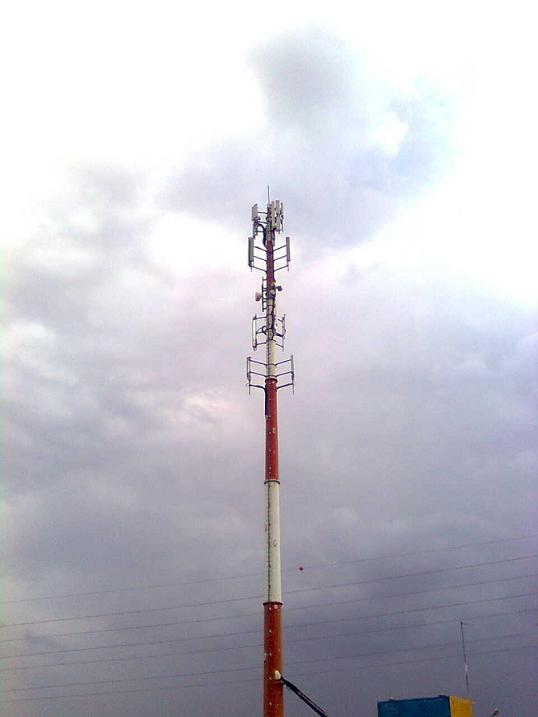According to a recent study conducted by doctoral student Noam David under the guidance of Professor Pinchas Alpert and Professor Hagit Maser-Yeron, it was found that it is possible to receive an early warning of an impending flood using measurements from wireless communication networks (such as communication arteries of cellular networks).

A method developed at Tel Aviv University, in which the reception data at the base stations of cellular networks is used for the purpose of predicting floods, won the award for the best invention in the field of safety for 2009 by the American magazine Popular Science.
In the December issue, the monthly centers the 100 most important inventions of the year in 11 categories such as automobiles, aviation, gadgets and more, and among others also in the field of safety. The winning research was conducted by doctoral student Noam David from the Department of Geophysics and Planetary Sciences at Tel Aviv University under the guidance of Professor Pinchas Alpert, Head of the Porter School of Environmental Studies at Tel Aviv University and Professor Hagit Maser-Yeron, President of the Open University.
The research shows that in areas prone to disasters such as the Judean desert, it is possible to receive an early warning of a flood, by analyzing the signal strength data received by the communication arteries of the cellular network. The strength of the signal is affected, among other things, by the amount of rain that falls between the base stations of the wireless communication system. This figure makes it possible to determine the area where the rain fell and its intensity.
Every year floods and inundations cause enormous damage to property and many times even death among people who unexpectedly find themselves in the place of danger. The existing methods for monitoring the amount of precipitation are mainly: rain gauges, cloud radar and satellite systems. However, these methods are not sufficient for predicting floods.
The rain gauges provide spot measurement and precisely in areas prone to floods such as the Judean Desert, their concentration is low. The cloud radar provides a measurement of the intensity of rainfall directly from the cloud, the radar that covers large areas, but it is less effective for measuring the intensity of rainfall near the surface of the ground, especially in places far from where the radar is placed. Satellite measurements also cover a large area, however, this system sometimes has difficulty providing a representative measurement of the intensity of precipitation near the ground or near the height of the cloud base, especially when it comes to highly developed clouds whose thickness may reach several kilometers.
The members of Messer-Yron and Alpert's research group use, instead, measurements from wireless communication arteries provided by the companies Pelephone and Cellcom. Weather conditions, especially rain, affect the strength of the signal received in the networks and cause a higher attenuation of the electromagnetic waves received in the system. The wireless communication arteries are located at a height of a few tens of meters above the ground, therefore they provide reliable rain measurements at a high frequency and near the surface of the earth. Moreover, the costs of the method are minimal since the cellular companies store the desired data anyway, so by analyzing and processing the existing reception data, the desired precipitation measurements can be obtained.
The wireless communication networks are widely spread and cover large areas, including flood-prone areas where it has not been possible to accurately and extensively monitor the intensity of the rainfall until now. The chance of recording precipitation is significantly higher using the proposed method, as well as measuring its amount with great accuracy in space and time, and by this means it is possible to receive an earlier warning of the danger, as demonstrated in a study conducted for two flood cases that occurred during the year 2008 in the Judean Desert and the northern Negev.
Prof. Pinchas Alpert says in response to the win: "During my service as a shift forecaster in the Air Force in the 70s, I found how difficult and sometimes frustrating it was to predict floods in the south of the country which occur unexpectedly within a very short period of time and cause extensive damage to lives and property. This fact motivated me to develop innovative methods using modern detection tools such as the one we recently developed using cellular antennas."
This study was submitted for publication in the scientific bulletin "Bulletin of the American Meteorological Society". In April 2009, the same group published an article in the scientific journal "Physics" and "Atmospheric Chemistry" in which the ability to monitor the degree of humidity in the air through wireless communication systems was demonstrated. This figure could improve the accuracy of the weather forecasting models and lead to a considerable improvement in the ability to warn against floods.
The news in Popular Science will appear in the December issueAt the address

4 תגובות
Kudos to Cellphone for helping out, poor people, how much money do they demand for this???
The idea of Yaniv Shahar
Electornics engineer
Notebook from Pelephone
Fantastic idea!!! Utilize an existing system at zero cost to test something entirely new that the original system was not even designed to test or solve.
Well done!